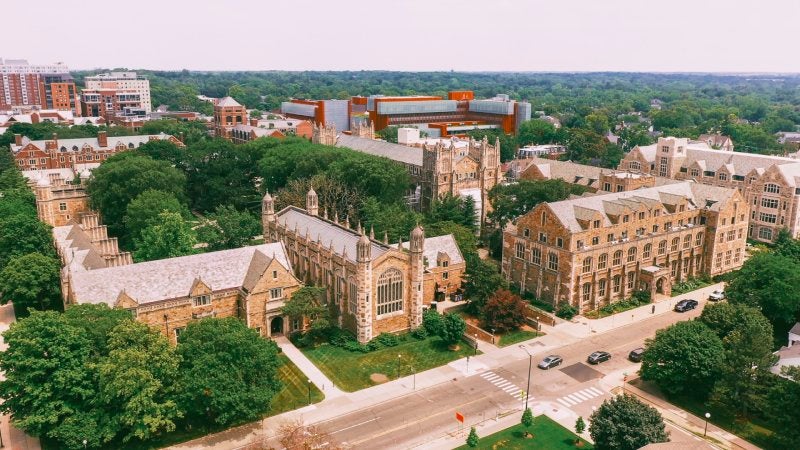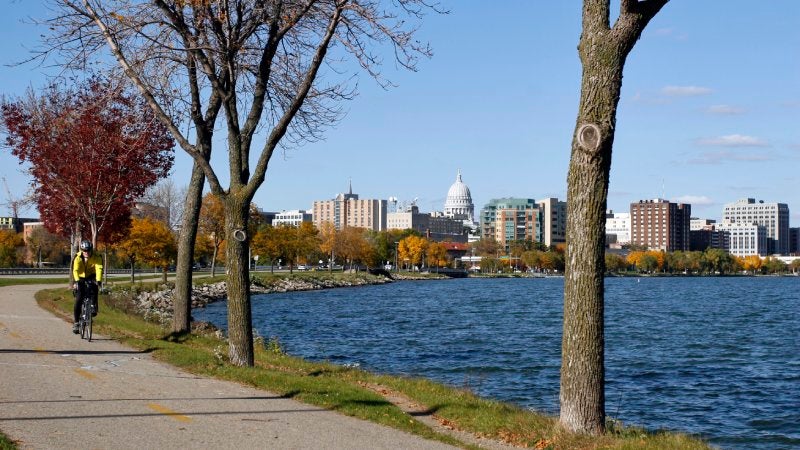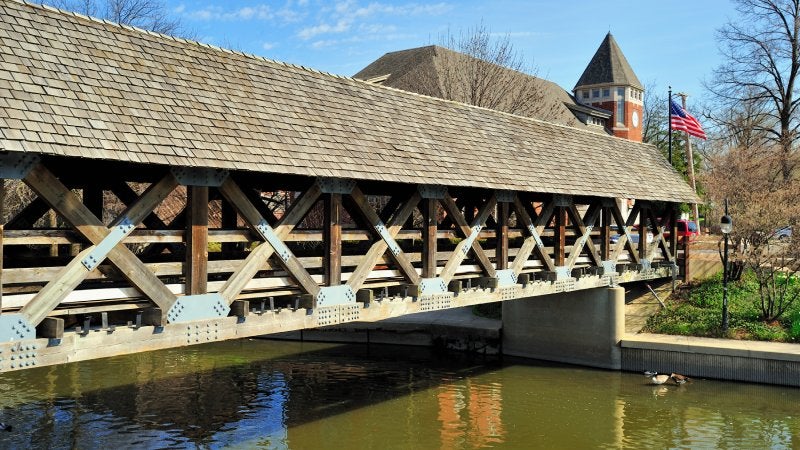Best cities for families to live in

The Bankrate promise
At Bankrate we strive to help you make smarter financial decisions. While we adhere to strict , this post may contain references to products from our partners. Here's an explanation for .
Choosing where to raise a family can be a daunting prospect in this day and age. Luckily, some cities are more family friendly than ever before. With high-quality public education systems, affordable childcare costs, abundant kid-friendly activities and low crime rates, these 15 U.S. cities are at the top of the list.
2022 best cities for families
1. Irvine, CA

- Population: 272,694
- Median household income: $108,318
- Percent of households with children: 36%
With more than 30 colleges in the University of California and California State University system offering relatively reasonable in-state tuition, the Golden State is attractive for any parent looking to provide the highest quality education they can afford to their children. Irvine is the first of many California cities on our list, and it’s no wonder why: Irvine has been named the safest city of its size in the U.S. for 16 straight years, based on FBI data. In addition, with 55 parks, more than 5,000 acres of open space and proximity to dozens of hiking trails, there are many ways to get your kids outside to enjoy the city’s year-round moderate weather.
2. San Jose, CA

- Population: 1.029 million
- Median household income: $117,324
- Percent of households with children: 37%
San Jose, California, is home to Silicon Valley and all the affluent tech jobs that come with it. This city is culturally diverse and a great option for those looking to raise their kids in the rich educational environment that comes with being a center for innovation. While well-paying jobs are plentiful, housing costs in San Jose can be steep, with the median home selling for $1.3 million in the first quarter of 2022.
3. Ann Arbor, MI

- Population: 121,093
- Median household income: $69,456
- Percent of households with children: 23%
Ann Arbor is the home of the University of Michigan, which may make it a bad place for an Ohio State fan to live, but gives it great amenities for families. Ann Arbor has 14 museums, including a highly rated children’s museum. It also has the second best public school system in the entire country, with an approachable median home sale price of $438,000, according to Redfin data.
4. Overland Park, KS

- Population: 193,412
- Median household income: $87,629
- Percent of households with children: 30%
With a median household income $20,108 above the national average, and a median home sale price $19,000 below the national average, Overland Park is one of the most affordable cities for families on our list. This Kansas community also boasts excellent schools and 83 parks for your kids to play in.
5. Boulder, CO

- Population: 108,777
- Median household income: $87,476
- Percent of households with children: 20%
Another great college town on this list, Boulder is home to University of Colorado, with many of the amenities that come with being a lively university town. Quality public schools, a strong local job market and abundant outdoor spaces make this city a great one for families.
6. Plano, TX

- Population: 288,870
- Median household income: $96,348
- Percent of households with children: 42%
With a high household income relative to housing and childcare costs, it’s no surprise to see that Plano, Texas, has one of the highest percentages of households with children out of all the cities on this list. Rated the third safest city in America with one of the top school districts in Texas, Plano is a great place for growing kids.
7. San Diego, CA

- Population: 1.415 million
- Median household income: $83,454
- Percent of households with children: 28%
San Diego is great for families, with year-round sunshine and no chance your kids will have to trudge through the snow “uphill both ways” to get to school. In addition to fantastic weather, the city boasts low unemployment, low crime and some of the best family-friendly attractions in the country, including the world-famous San Diego Zoo.
8. Madison, WI

- Population: 258,366
- Median household income: $67,565
- Percent of households with children: 22%
Yet another college town, Madison is home to the University of Wisconsin, the largest in the state, giving families all of the perks that come with it — including abundant museums, quality public schools and plentiful parks. The nearby Wisconsin Dells boasts some of the largest indoor water parks in the world, providing kids with year-round fun despite the cold Wisconsin winters.
9. Columbia, MD

- Population: 105,412
- Median household income: $111,278
- Percent of households with children: 30%
With a relatively low cost of living and high household incomes, Columbia, Maryland, is a great place to raise a family. In addition to being extremely affordable, Columbia boasts low crime rates and close proximity to Washington, DC, with all of the museums and cultural attractions our nation’s capital has to offer.
10. Naperville, IL

- Population: 147,734
- Median household income: $127,648
- Percent of households with children: 47%
With the top-ranked public school district in the country, it’s no surprise that Naperville, Illinois, boasts the highest percent of households with children on our list. With 136 parks and a 13-acre historic settlement featuring costumed re-enactors and a blacksmith shop, Naperville has no shortage of family-friendly amenities.
11. Fremont, CA

- Population: 234,829
- Median household income: $142,374
- Percent of households with children: 44%
The second Bay Area city on our list, Fremont, CA has an even higher median household income than San Jose. That makes supporting a family easier, despite the high cost of living. While less diverse than San Jose, Fremont is still a cultural hub, with language diversity ranked second in the state based on Census data. It also boasts excellent schools and a low crime rate, making Fremont a great place to raise kids.
12. Carlsbad, CA

- Population: 114,411
- Median household income: $112,933
- Percent of households with children: 33%
Located a mere 35 miles up the coast from San Diego, Carlsbad boasts the same dreamy weather and lots of its other benefits to boot. With its much lower population, the amazing beaches should be a bit less crowded too. Carlsbad is also home to LEGOLAND California, an extremely popular and kid-friendly amusement park.
13. Naples, FL

- Population: 21,750
- Median household income: $118,141
- Percent of households with children: 9%
Situated on the west coast of Florida, Naples has access to a wonderful amount of nature. Beaches and fishing abound, and the Everglades National Park Gulf Coast Visitor Center is just down the coast. If the swamp strikes your family’s interests, you can investigate further at the Audubon Corkscrew Swamp Sanctuary. The Golisano Children’s Museum of Naples is another wonderful place for nurturing curious kids.
14. Arlington, VA

- Population: 236,434
- Median household income: $122,604
- Percent of households with children: 21%
It’s very difficult to pick a city in the United States that’s closer to such a dense collection of museums and historically significant sites than Arlington, VA. Much like nearby Columbia, Maryland, Arlington’s proximity to Washington, DC, provides access to all the amenities of DC. The Smithsonian museums alone can provide years of education. Diverse foods, cultures and entertainments abound, whether one wants to take a trip to Chinatown or catch a show at the Kennedy Center. Professional sports enthusiasts can choose between football, basketball, baseball, soccer and hockey games to enjoy with their kids.
15. Trenton, NJ

- Population: 83,387
- Median household income: $37,002
- Percent of households with children: 34%
“You live in Jersey? Which exit?” If you choose to settle down in Trenton, you’ll have to learn to live with this “classic” New Jersey Turnpike joke. On the upside, though, families in Trenton can expect a low cost of living, a state with the lowest crime rate in the country and plenty of kid-friendly activities — including a nearby Six Flags Great Adventure. With multiple outdoor parks, the Trenton area can also show your kids why New Jersey is called the Garden State.
Methodology
In determining our Best Cities for Families rankings, we looked at a variety of factors in a weighted points system. Our system factored in criteria including the quality of the public school systems, childcare affordability in the state, quality of life and cities with the most families.
FAQs
-
Throughout the U.S., 58% of working parents rely on childcare centers.
-
According to World Population Review ratings, Massachusetts, Minnesota, North Dakota, New York and Vermont are the top five best states to raise a family in.
-
Based on Consumer Affairs scoring, the safest state in America is New Jersey. Among other high-ranking states, New Jersey stands out due to a high score for law enforcement officers per capita.
-
By area, Jacksonville, Florida, is the largest city in the continental U.S. at 875 square miles. Jacksonville did not rank on our list because it has relatively high crime rates, but the state of Florida did rank in the top states for affordable childcare. (If you’re judging by population, though, the largest city in the U.S. by far is New York City.)
Related Articles


10 best U.S. cities to start a career — and most are in the South

